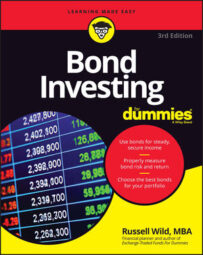Most people view bonds as low-risk investments. You give your money to a government or corporation. You receive a steady flow of income, usually twice a year, for a certain number of years. Then, typically after a few years, you get your original money back. Sometimes you pay taxes. A broker usually takes a cut. Beginning and end of story.
The reason for bonds’ staid status is not only that they provide steady and predictable streams of income, but also that as a bondholder you have first dibs on the issuer’s money. A corporation is legally bound to pay you your interest before it doles out any dividends to people who own company stock.
If a company starts to go through hard times, any proceeds from the business or (in the case of an actual bankruptcy) from the sale of assets go to you before they go to shareholders.
However, bonds offer no ironclad guarantees. All investments carry some risk, such as default risk.
Default risk is what most people think of when they think of investment risk. Even many bond investors focus on default risk . . . sometimes, too much. In fact, most bond investors worry so much about default risk that it often blinds them to the more common and more insidious risks of bond investing.
What is default risk? Simple: The issuer of your bond starts to go under; limited or no money is left to pay creditors; and not only do your interest payments stop coming in the mail every six months, but also you start to wonder if you’ll ever get your principal back.
If the issuer actually declares bankruptcy, your mailbox, instead of offering you interest payments, will be flooded with letters from lawyers explaining (in explicit Latin) that you are a sucker and a fool.
With Treasuries and agency bonds, a default has never happened. Rarely do municipal bonds or investment-grade corporate bonds default. Default risk is mostly an issue when you invest in high-yield (junk) corporate bonds.
When the economy is humming along, defaults are rare. When the economy slides and even companies that make hotcakes can’t sell their wares, default rates jump. That’s an especially nasty time to be losing money on your bonds because chances are good that your other investments are doing poorly.
Certain foreign bonds, especially emerging-market bonds, carry default risk as well. But emerging-market bonds (bonds issued mostly by the governments of poor countries), unlike U.S. junk corporate bonds, have limited correlation to the U.S. stock market. For that reason, although emerging-market bonds have somewhat higher volatility than U.S. junk bonds, they’re often a better risk for a portfolio.

